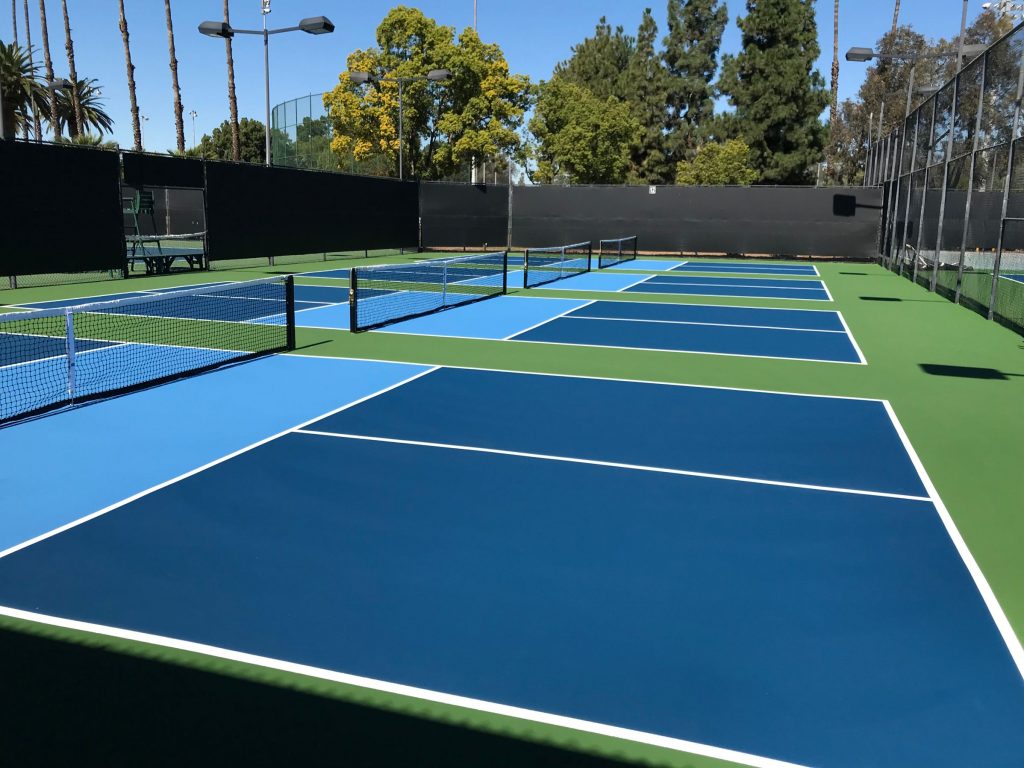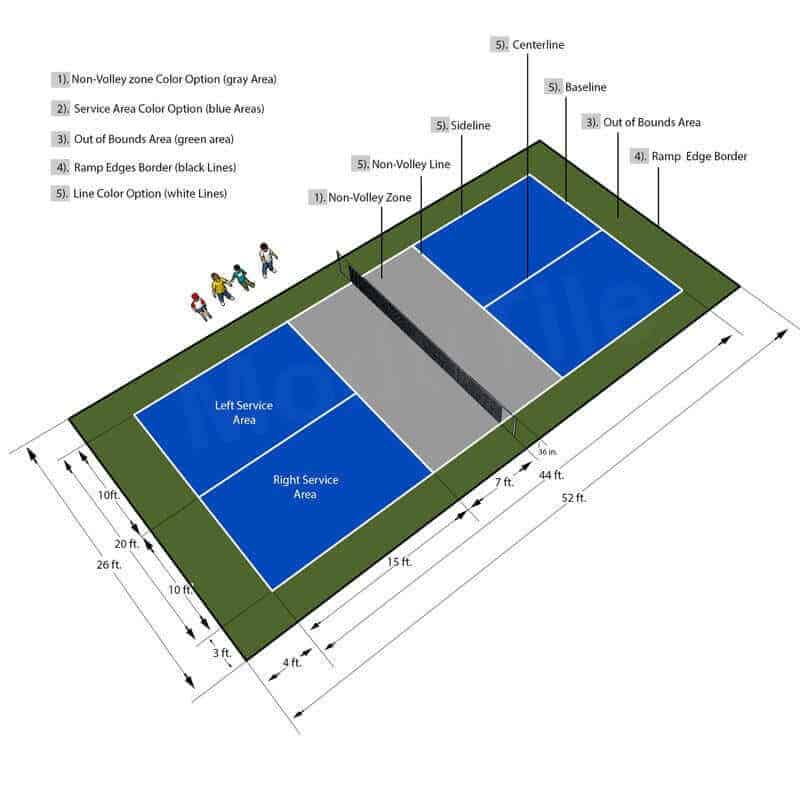The Leading Pickleball Judiciaries Layout & Building And Construction Experts in Illinois and Midwest
The Leading Pickleball Judiciaries Layout & Building And Construction Experts in Illinois and Midwest
Blog Article
Key Elements in the Building of Pickleball Courts: From Website Selection to Last Finishes
The construction of pickleball courts includes a variety of critical elements, starting with the option of an appropriate site that balances availability with ecological factors to consider. Essential elements such as court dimensions, surface materials, and drain systems substantially affect not just the top quality of play however likewise the long life of the center.
Website Choice Requirements
When starting the building of pickleball courts, it is vital to pin down the website option standards that will certainly make certain optimum playability and accessibility. The location must be easily reachable for gamers, preferably positioned near household areas or neighborhood centers, to motivate involvement.
Furthermore, the surface needs to be degree and steady, as unequal ground can result in safety hazards and influence gameplay. Ample water drainage is likewise crucial; selecting a website with excellent water overflow will aid preserve court problems during adverse weather.
One more important factor to consider is the schedule of energies. Access to electrical power and water is necessary for lights and maintenance purposes. Furthermore, proximity to car parking centers is vital, facilitating very easy access for gamers and spectators alike.
Ecological elements can not be forgotten; natural color from trees can enhance player convenience, while exposure to dominating winds may interrupt play. Zoning guidelines and community support need to be considered to make sure that the task aligns with regional standards and obtains the backing it needs for effective execution. By thoroughly examining these standards, stakeholders can create an inviting and practical setting for pickleball enthusiasts.
Court Dimensions and Design
To make certain optimal gameplay and adherence to policies, the dimensions and design of pickleball courts have to be thoroughly defined. A typical pickleball court measures 20 feet in width and 44 feet in length for both singles and doubles play. The suggested design consists of a non-volley area, generally described as the "kitchen," extending 7 feet from the net on either side. This area is important, as it affects gamer positioning and shot option - Illinois and midwest.
The internet height is evaluated 36 inches at the sidelines and 34 inches at the center, creating a slight dip that affects round trajectory. Court markings are just as vital; lines must be 2 inches large and unique in shade to make sure exposure.
Additionally, a barrier area bordering the court is recommended, generally extending 5 to 10 feet past the sidelines and standards to fit players' activities and boost security. Appropriate layout and measurements not just guarantee compliance with main guidelines but also boost the general playing experience, suiting both leisure and competitive play. Mindful planning in these areas is extremely important to the successful building of pickleball courts.
Surface Area Material Options
Choosing the appropriate surface material for pickleball courts is essential for ensuring optimum great post to read player efficiency and security. The choice of surface area can considerably influence gameplay, including round bounce, traction, and gamer comfort.
There are numerous options readily available, each with its distinct features. Asphalt is a prominent selection as a result of its resilience and reduced maintenance demands. It provides a solid having fun surface that can stand up to various weather condition problems but might require regular resurfacing.
Concrete is an additional widely utilized product, offering exceptional long life and a smooth finish. It permits regular ball bounce however can be Click This Link difficult on gamers' joints, making it less desirable for long-lasting play without correct cushioning.
For those seeking improved convenience and shock absorption, supported acrylic surfaces provide a feasible choice. These surfaces combine a base layer with an acrylic topcoat, supplying boosted traction and a softer feel, which is useful for lowering the threat of injuries.
Lastly, synthetic grass is getting grip, specifically for multi-purpose facilities. Its flexibility and lower upkeep requires make it an appealing alternative, discover this though it might not give the same ball reaction as conventional difficult courts. Cautious factor to consider of these alternatives will certainly make certain an optimum having fun setting.
Water Drainage and Lights Factors To Consider
Correct water drainage and reliable lights are crucial parts in the building and construction of pickleball courts, dramatically affecting both playability and security. Sufficient drain systems avoid water accumulation, which can lead to unsafe surface areas and damage to the court structure. A well-designed water drainage strategy includes sloped surface areas and proper materials to help with water flow away from the playing area - Illinois and midwest. This not only maintains the honesty of the court however also minimizes downtime as a result of bad weather.
Illumination is just as crucial, specifically for courts planned for night use. Proper lighting boosts exposure, ensuring that players can see the round clearly and decreasing the threat of accidents. The placement of illumination components should be tactically prepared to remove shadows and offer even distribution of light throughout the court. LED lights are advised for their energy efficiency and durability, providing intense illumination while decreasing operational expenses.

Last Surfaces and Upkeep
After resolving drain and illumination considerations, focus transforms to the final finishes and recurring maintenance of pickleball courts. Common alternatives consist of acrylic finishings and specialized sports surface areas that supply ideal grip and padding.

Seasonal maintenance may consist of resurfacing every few years, depending upon use and environmental aspects. Properly preserving webs, court lines, and surrounding areas is just as important to offer a secure and enjoyable playing experience. By spending in top quality finishes and adhering to an organized upkeep schedule, facility owners can guarantee their pickleball courts stay in exceptional problem for many years to come.
Final Thought
In conclusion, the effective building and construction of pickleball courts pivots on precise attention to numerous crucial elements. Quality coatings and a durable maintenance timetable are necessary for protecting the court's condition, boosting the overall experience for gamers and viewers alike.
Report this page